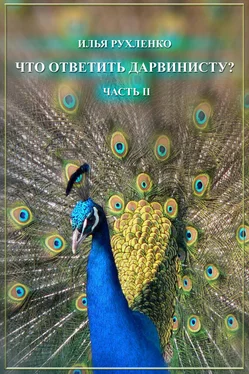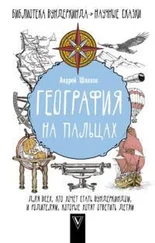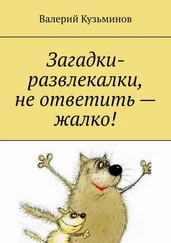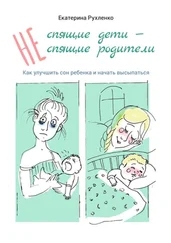Cano R.J., Poinar H.N., Pieniazek N.J., Acra A., Poinar G.O. Jr. Amplification and sequencing of DNA from a 120-135-million-year-old weevil // Nature. 1993. V. 363. № 6429. P. 536–538.
Cano R.J., Poinar H.N., Roubik D.W., Poinar G.O. Jr. (б) Enzymic amplification and nucleotide sequencing of portions of the 18s rRNA gene of the bee Proplebeia dominicana (Apidae: Hymenoptera) isolated from 25–40 million year old Dominican amber // Medical Science Research. 1992. V. 20. № 17. P. 619–622.
Clemente J.C., Pehrsson E.C., Blaser M.J., Sandhu K., Gao Z., Wang B., Magris M., Hidalgo G., Contreras M., Noya-Alarcon O., Lander O., McDonald J., Cox M., Walter J., Oh P.L., Ruiz J.F., Rodriquez S., Shen N., Song S.J., Metcalf J., Knight R., Dantas G., Dominquez-Bello M.G. The microbiome of uncontacted Amerindians // Science Advances. 2015. V. 1. № 3. P. e1500183
Cody G.D., Gupta N.S., Briggs D.E.G., Kilcoyne A.L.D., Summons R.E., Kenig F., Plotnick R.E., Scott A.C. Molecular signature of chitin-protein complex in Paleozoic arthropods // Geology. 2011. V. 39. № 3. P. 255–258. doi: 10.1130/G31648.1
Collins M.J., Gernaey A.M., Nielsen-Marsh C.M., Vermeer C., Westbroek P. Osteocalcin in fossil bones: evidence of very slow rates of decomposition from laboratory studies // Geology. 2000. V. 28. P. 1139–1142.
Colombo M., Diepeveen E.T., Muschick M., Santos M.E., Indermaur A., Boileau N., Barluenga M., Salzburger W. The ecological and genetic basis of convergent thick-lipped phenotypes in cichlid fishes // Mol Ecol. 2013. V. 22. № 3. P. 670–684.
Crothers J.H. Dog-whelks: an introduction to the biology of Nucella lapillus (L.) // Field Studies. 1985. V. 6. P. 291–360.
D’Costa V.M., King C.E, Kalan L., Morar M., Sung W.W.L., Schwarz C., Froese D., Zazula G., Calmels F., Debruyne R., Golding G.B., Poinar H.N., Wright G.D. Antibiotic resistance is ancient // Nature. 2011. V. 477. P. 457–461.
Dakin R., Montgomerie R. Peahens prefer peacocks displaying more eyespots, but rarely // Animal Behaviour. 2011. V. 82. № 1. P. 21–28.
Davies K.L. Duck-bill dinosaurs (Hadrosauridae, Ornithischia) from the north slope of Alaska // Journal of Paleontology. 1987. V. 61. № 1. P. 198–200.
Dawkins R. The extended phenotype. Oxford University Press, 1982. – 307 p.
DeSalle R., Gatesy J., Wheeler W., Grimaldi D. DNA sequences from a fossil termite in Oligo-Miocene amber their phylogenetic implications // Science. 1992. V. 257. № 5078. P. 1933–1936.
Dias B.G., Ressler K.J. Parental olfactory experience influences behavior and neural structure in subsequent generations // Nature Neuroscience. 2013. V. 17. P. 89–96.
Diegisser T., Seitz A., Johannesen J. Morphological adaptation in host races of Tephritis conura // Entomologia Experimentalis et Applicata. 2007. V. 122. № 2. P. 155–164.
Dres M., Mallet J. Host races in plant-feeding insects and their importance in sympatric speciation. Philosophical Transactions of the Royal Society of London B. 2002. V. 357. P. 471–492.
Du Toit J.T. Feeding-height stratification among African browsing ruminants // African Journal of Ecology. 1990. V. 28. P. 55–61.
Edgell T.C. The geography of inducible defence in a marine snail // The Malacologist. 2008. V. 50. P. 30–31. http:// www.malacsoc.org.uk/the_Malacologist/BULL50/Edgell.htm
Edgell T.C., Neufeld C.J. Experimental evidence for latent developmental plasticity: intertidal whelks respond to a native but not an introduced predator // Biol Lett. 2008. V. 4. P. 385–387.
Edwards N.P., Barden H.E., van Dongen B.E., Manning P.L., Larson P.L., Bergmann U., Sellers W.I., Wogeleus R.A. Infrared mapping resolves soft tissue preservation in 50 million year-old reptile skin // Proc. R. Soc. B. 2011. V. 278. P. 3209–3218.
Elmer K.R., Lehtonen T.K., Kautt A.F., Harrod C., Meyer A. Rapid sympatric ecological differentiation of crater lake cichlid fishes within historic times // BMC Biology. 2010. V. 8. P. 60.
Eronen M., Zetterberg P., Briffa K.R., Lindholm M., Merilainen J., Timonen M. The supra-long Scots pine tree-ring record for Finnish Lapland: part 1, chronology construction and initial inferences // The Holocene. 2002. V. 12. P. 673–680.
Feder J.L. The effects of parasitoids on sympatric host races of Rhagoletis pomonella (Diptera: Tephritidae) // Ecology. 1995. V. 76. № 3. P. 801–813.
Feder J.L., Reynolds K., Go W., Wang E.C. Intra– and interspecific competition and host race formation in the apple maggot fly, Rhagoletis pomonella (Diptera: Tephritidae) // Oecologia. 1995. V. 101. № 4. P. 416–425.
Fikacek M., Prokin A., Angus R.B. A long-living species of the hydrophiloid beetles: Helophorus sibiricus from the early Miocene deposits of Kartashevo (Siberia, Russia) // Zookeys. 2011. V. 130. P. 239–254.
Filchak K.E., Roethele J.B., Feder J.L. Natural selection and sympatric divergence in the apple maggot Rhagoletis pomonella // Nature. 2000. V. 407. №. 6805. P. 739–742.
Fisher J.A.D., Rhile E.C., Liu H., Petraitis P.S. An intertidal snail shows a dramatic size increase over the past century // Proc Natl Acad Sci USA. 2009. V. 106. P. 5209–5212.
Forbes A.A., Powell T.H.Q., Stelinski L.L., Smith J.J., Feder J.L. Sequential sympatric speciation across trophic levels // Science. 2009. V. 323. № 5915. P. 776–779.
Freeman A.S., Byers J.E. Divergent induced responses to an invasive predator in marine mussel populations // Science. 2006. V. 313. P. 831–833.
Freeman A.S., Byers J.E. Response to comment on “Divergent induced responses to an invasive predator in marine mussel populations” // Science. 2007. V. 316. P. 53.
Gallant J.R., Traeger L.L., Volkening J.D., Moffett H., Chen P., Novina C.D., Phillips Jr. G.N., Anand R., Wells G.B., Pinch M., Guth R., Unguez G.A., Albert J.S., Zakon H.H., Samanta M.P., Sussman M.R. Genomic basis for the convergent evolution of electric organs // Science. 2014. V. 344. P. 1522–1525.
Garwood R.J., Dunlop J.A., Giribet G., Sutton M.D. Anatomically modern Carboniferous harvestmen demonstrate early cladogenesis and stasis in Opiliones // Nature Communications 2. 2011. Article number: 444. doi:10.1038/ncomms1458
Gibson D.G., Benders G.A., Andrews-Pfannkoch C., Denisova E.A., Baden-Tillson H., Zaveri J., Stockwell T.B., Brownley A., Thomas D.W., Algire M.A., Merryman C., Young L., Noskov V.N., Glass J.I., Venter J.C., Hutchison III C.A., Smith H.O. Complete chemical synthesis, assembly, and cloning of a Mycoplasma genitalium genome // Science. 2008. V. 319. № 5867. P. 1215–1220.
Glass K., Ito S., Wilby P.R., Sota T., Nakamura A., Bowers C.R., Vinther J., Dutta S., Summons R., Briggs D.E.G., Wakamatsu K., Simon J.D. Direct chemical evidence for eumelanin pigment from the jurassic period // PNAS. 2012. V. 109. № 26. P. 10218-10223.
Golenberg E.M., Giannasi D.E., Clegg M.T., Smiley C.J., Durbin M., Henderson D., Zurawski G. Chloroplast DNA sequence from a Miocene Magnolia species // Nature. 1990. V. 344. P. 656–658.
Gore P.J.W. Triassic Notostracans in the newark supergroup, Culpeper Basin, Northern Virginia // Journal of Paleontology. 1986. V. 60. № 5. P. 1086–1096.
Gould S.J. Evolution's erratic pace // Natural History. 1977. V. 86. № 5. P. 14.
Grant B.R., Grant P.R. Evolution of Darwin’s finches caused by a rare climatic event // Proc. R. Soc. Lond. B. 1993. V. 251. P. 111–117.
Grant B.R., Grant P.R. Natural selection in a population of Darwin’s finches // Am. Nat. 1989. V. 133. P. 377–393.
Читать дальше
Конец ознакомительного отрывка
Купить книгу











